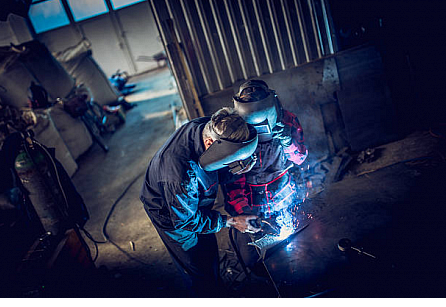Welders must need to understand the importance of welding boots to protect their health and safety. It ensures the purpose of protection in the workplace. It doesn’t matter that you are an occasional welder or a professional worker, but you must wear welding boots.
There are many types of welding boots on the market. Most of them provide safety however they might differ in some aspects of protection. Often neglected, they are a crucial part of welder’s equipment as foot injuries during welding can be severe.
We asked our expert – Mark Green, product engineer at Welding Superstore where he specializes in designing boots and welding jackets (https://www.weldingsuperstore.com.au/welding-jackets/), why welding boots are so important. This is what he pointed out:

Role of welding boots in welding
Welding boots protect feet from different types of hazards at work. Let’s look at some most common them:
Protect from heavy objects
The welding process can involve transferring heavy objects, such as pipes, flat bars, or angles. Most of them are made of steel, so they are heavy and not easy to move. In fast pace workplaces, time matters, and when people rush, some of the work health and safety procedures are neglected. The metal objects can fall during transport and even if they fall from 30 or 40 cm (for example forklift) on workers’ feet they cause severe injuries – broken toes, crushed bones, etc. This is why welding boots are equipped with steel caps that protect toes. Also the thick leather they are made of protects from side impacts of smaller objects.

Protection from punctures
Metal objects, even if they are not big, have sharp edges – thick leather welding boots are made of protects welder’s feet from small sharp objects falling on the ground. It is also worth noting, that welding workshops, construction sites, or any metal fabrication workshops often have sharp objects, laying on the ground. This is extremely dangerous and good welding boots are always equipped with very thick, reinforced soles to protect feet from nails or any sharp objects which might be metal off-cuts, pieces of wire, or even broken glass (pretty common at construction sites). It has been proven many times, that soft sole boots, unfortunately, do not offer enough protection.
Prevent from burns

The welding process creates fire sparks that fall around the large area. Sparks spread freely and cannot be controlled. Welder’s feet come into the close connection with the fire sparks so it can get the burns quickly. Welding boots can stand against the molten metal splashes. So it can protect the welder from burning which can be dangerous.
Prevent from slipping
Some of the welding jobs take place in mechanical workshops and sites where the ground can be slippery. Oil spillages are every mechanic’s nightmare and working and when working with cars most of the fluids, such as brake or transmission fluids (not to mention grease itself), are very slippery. As some of the workshops do not have a designated area for welding, it’s pretty common for welders to walk on such slippery surfaces. Construction or mine sites on the other hand often have large areas covered in water and mud or clay, which can be very dangerous as well. Welding boots often have soles with special patterns to prevent slipping.
Welding shoes have significant traction that helps the welders to move freely over slippery floors. So it also protects the workers from falling over the heavy metal pieces and safe them from significant injuries.

Conclusion
Summing up the above discussion, it is clear that welding boots are an important part of a welder’s equipment and should be worn at all times. Normal boots just do not offer enough protection and additional support against punctures, burns, and slippery surfaces.
